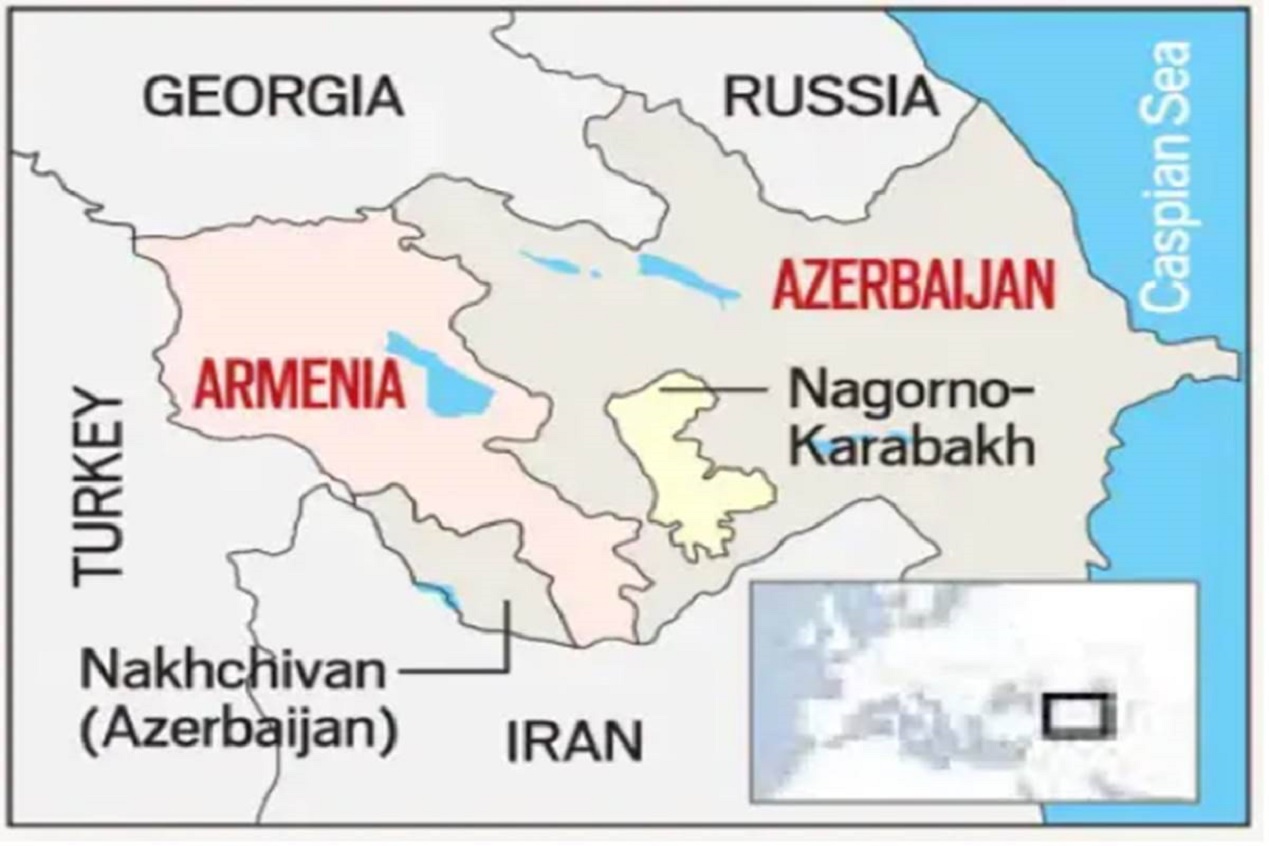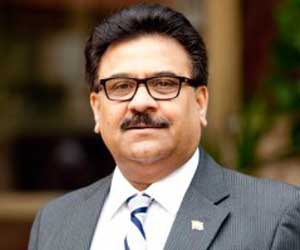Nagorno Karabakh is one of the frozen conflicts in Eurasia for over a quarter century. However, on September 27 the two contenders and neighbours Azerbaijan and Armenia fired up the conflict yet again resulting in hundreds of casualties and attacks on civilian areas. This time the battle is overtly to the finish as Azerbaijan wants to take back its territory which has been inhabited and controlled by the ethnic separatist Armenians and managed by Yerevan at least since 1994. This is clearly one of the typical legacies left either by the dying British Empire or the disintegrating Soviet Union. Looking back as Amb Achal Malhotra in his book “The South Caucasus -Transition from Subjugation to Independence” notes Soviet Union’s decision of 28th November, 1989, to give up its direct rule over Nagorno-Karabakh and to restore it to Azerbaijan outraged Armenians who in defiance of Moscow responded by declaring, on 1st December 1989, NagornoKarabakh as part of an “unified Armenian republic”. Several skirmishes and even full-fledged wars have taken place since. But this time the armed conflict has exacerbated more due to overt and emboldened support from Turkey to Azerbaijan.
Russia, bilaterally and within the Organization for Security and Cooperation in Europe (OSCE) Minsk Group format with US and France set up in 1992 to resolve the issue, has tried humanitarian ceasefire twice but both sides continue to accuse the other of violations. While Azeri town of Ganja saw the Armenian missile attacks and casualties the Azeri forces have gained territory in the Karabakh region. Armenians have reported that more than 700 soldiers have been killed. UN Secretary General Antonio Guterres and the UNSC have appealed to both sides to respect the ceasefire.
The Caucasus region, encompassed by Black and Caspian seas, has for centuries been contested among the Persian, the Ottoman and Russian empires and switched hands many a time from one to the other finally landing with the Soviet Union. With the disintegration of the Soviet Union as a result of Gorbachev’s Glasnost and Perestroika the constituent states of the Soviet Union sought independence and wanted to drive their own future while in the beginning wanted to retain the closer ties with the Russians. However, that was just a matter of time and Ukraine and Georgia are the two examples. Of course the NATO expansion towards the erstwhile Soviet boundaries was an easy game as Russia was weakened economically as well as militarily even through it continues its efforts to promote Eurasian Economic space. Russia does have significant interest and influence over Armenia and Azerbaijan. Russia has a military base in Armenia which is also a Christian country. Besides, it is also a Collective Security Treaty Organization (CSTO) military alliance partner hence Russia is treaty bound to protect it, but Russia would prefer a peaceful resolution due to its own geo-politico and economic interests.
Azerbaijan is a predominantly Muslim country and has close ties with Turkey and Iran. It is also rich in oil and gas and major pipelines to Europe either emanate from here or pass through. Hence it is of geo economic and geopolitical importance to many countries in the region and the west. Even Armenia gets its gas and oil from Azerbaijan. No wonder one sees the extant interest of Israel and Turkey on the side of Baku. Israel not only buys large quantities of oil and gas from them but also supplies arms and ammunition to Azerbaijan which is one of the few Islamic countries with whom Tel Aviv has good diplomatic relations. Israel buys nearly 40% of its oil and supplies most of defence requirements of Baku. During 2013-16 it sold $885 mn of arms as per a SIPRI report apart from sharing defence technologies and training of Azeri special forces. Turkey does not recognise Armenia and the two countries have a major issue of genocide of 1.5 million Armenians during the Ottoman era.
In this conflict Erdogan has said that he fully stands with Baku be it on the “battlefield or negotiating table”. Turkey was the first country to recognise Azerbaijan in 1991 and follows the “the two states one nation principle”. Turkey is also the third largest supplier of arms and ammunition to Azerbaijan after Russia and Israel. Baku is one of the major investors in Turkey and its oil and gas pipelines pass through the Turkish territory. This fits into Turkey’s regional ambitions as well as Islamic leadership quest and geopolitics. Turkey has been accused of facilitating Syrian mercenaries to fight with Azeri forces or to protect pipelines and oil installations. Some Turkish F-16s and drones, other equipment and military consultants were also reported to be helping the Baku leadership which has been denied. This has complicated the situation further.
Turkey also wants to be part of the solution and any talks which as of now is not acceptable to Russia or the Minsk Group who feel that evangelical approach and religious angle between Armenia and Turkey might do a greater disservice to any chance of peace. Putin and Erdogan, who are pitted against each other in different theatres of conflict from Syria to Libya to Mediterranean to Caucasus, try to find a modus vivendi and have spoken several times since the conflict began.
Iran which shares borders with both Azerbaijan and Armenia and has good relations with both. But as Israel is integrally involved with Baku in the conflict Iran appears to support Yerevan but is also doing a delicate balancing act. It is a Hobson’s choice as Azerbaijan has also been a part of Persian empire and is a brotherly Islamic nation and scores of Azeris live in Iran and support the Baku actions. Besides there were several demonstrations in the predominantly Azeri areas in Iran. Tehran reassured Baku and reiterated its stand of Nagorno-Karabakh being the Azeri lands and must be returned in accordance with the UN resolutions. On the other hand, it also has close economic and energy relations and strategic calculations because Persian Gulf could have the shortest connect to Europe via Armenia and Georgia for its transit corridors. It, however, supports a peaceful resolution through dialogue. President Rouhani spoke to his Armenian, Russian and Azeri counterparts for effective ceasefire and early dialogue. Meanwhile, several rockets and shelling from the Nagorno-Karabakh fighting landed on Iranian soil, with several shells hitting a residential area close to the border for the first time causing some injuries. Iranian foreign ministry said it “will not tolerate” the conflict spilling into its borders.
On the other hand, Pakistan, which has remarkably close relations with Azerbaijan, has not only supported Baku but reportedly Pakistani fighters were said to be engaged as well. Islamabad has denied it. Pakistan does not recognise Armenia. In return Baku has consistently supported Pakistan with its energy supplies and more importantly like Turkey makes anti-India statements on J&K, Art 370 etc. in the international fora much to India’s chagrin. Pakistan has long-term intergovernmental agreements for supplies of oil and gas, especially LNG.
Delhi and Baku did not have many high-level visits as compared to Armenia due to Azeri stance on India’s internal matters even though trade and economic engagement has grown over the decades. Azerbaijan has also become a tourist and film shooting destination for Indians in recent times. In recent years Baku has become an important partner in the International North South Transport Corridor INSTC). In fact the ‘Ateshgah’ fire temple in the vicinity of Baku, which I visited early this year, is a fine example of the age-old historical relations and cultural exchanges between India and Azerbaijan. This 18th century monument, with a much older history, has wall inscriptions in Devanagiri and Gurmukhi, and is a surviving proof of the trade links and hospitality that Indian merchants on the Silk Route to Europe enjoyed in Azerbaijani cities such as Baku and Ganja. Bilateral trade exceeds $ 1bn and India has invested significantly in Azerbaijan. ONGC Videsh Ltd. (OVL) had acquired shares worth US$ 1 billion in March 2013 in development project of the Azeri-Chirag-Gunashli (2.72%) oil field and the Baku-Tbilisi-Ceyhan pipe line (2.36%) from US Company Hess. Indian Oil Corporation (IOC) is also showing interest in exploring Azerbaijani oil sector and is in discussions with the State Oil Company of the Azerbaijan Republic (SOCAR). Sun Pharma is providing technical know-how for a plant being built by Gilan Holding for production of solid consistency drugs in Sumgayit. (Embassy brief)
On the other hand, Armenia had close and cultural relations for centuries with India and the Armenian church flourished in Calcutta since 1562 and elsewhere and they contributed a great deal to the development of the city. Historians have suggested that when Assyrian warrior queen Semiramis invaded India in 2000 BC, some Armenians accompanied her as they probably did Alexander the Great in 326 BC. According to literary evidence, there were Indian settlements in Armenia established by two Indian Princes (Krishna and Ganesh escaping from Kannauj) who along with their families and large retinue had arrived in Armenia as early as 149 BC and were allotted land in Taron region (now in Turkey) by the then rulers of Armenia. Thomas Cana is said to be the first Armenian to have landed on the Malabar Coast in 780 AD. The first guidebook to Indian cities in Armenian was written in the 12th century. Even in defence sector India was able to secure against Russia and others an order for $40 mn for supply of Swathi radar locator systems. Large number of Indians including students live in both the countries. Several high-level visits have taken place between the two countries.
Azerbaijan currently exports nearly 700,000 bpd of oil and 780 mn cubic feet of gas daily. However, geo-political peculiarity has brought some strange bedfellows on opposing sides. One sees Turkey, Israel and Pakistan on one side while Russia and Iran on the other. US and Europe and all the rest would like the energy supplies and crucial oil and gas pipelines not to be disrupted by an intensifying conflict.
India’s position on the conflict has been predicated by its desire to have the issue resolved through discussion and dialogue and the predicament over the dichotomy of fundamental issues involved. Hence the Indian foreign ministry issued a statement expressing concern over the situation which threatens regional peace and security and “We reiterate the need for the sides to cease hostilities immediately, keep restraint and take all possible steps to maintain peace at the border. India believes that any lasting resolution of the conflict can only be achieved peacefully through diplomatic negotiations. In this regard, we support OSCE Minsk Group’s continued efforts for a peaceful resolution of the conflict between Armenia and Azerbaijan.”
It is unlikely that the conflict, which is mired between the principles of territorial integrity and self-determination and falls on the cross lines of the regional and international geo-politics and strategic economic interests will be resolved any time soon. But genuine efforts must go on especially by those trying and entrusted to mediate in the dialogue. Partisan approaches are bound to fail. Frozen conflicts are like volcanoes and their lava can spread far and wide.
(The paper is the author’s individual scholastic articulation. The author certifies that the article/paper is original in content, unpublished and it has not been submitted for publication/web upload elsewhere, and that the facts and figures quoted are duly referenced, as needed, and are believed to be correct). (The paper does not necessarily represent the organisational stance... More >>
Image Source: https://images.financialexpress.com/2020/10/Armenia-Azerbaijan-conflict.jpg










Thanks for the insightful knowledge the spark in this region may spread like a wildfire if not doused in time. May be UNSC can deploy peacekeeping force.
Post new comment